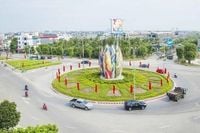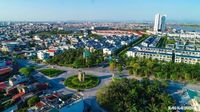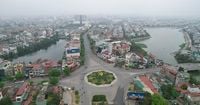On April 22, 2025, the Hai Duong Provincial Party Committee made significant strides toward the effective restructuring of its administrative units. This initiative is aimed at renaming the administrative units at the commune level after a comprehensive rearrangement process. The Standing Committee of the Provincial Party Committee has taken the reins in overseeing this task, ensuring that the new names reflect the rich history and cultural significance of the region.
The new naming strategy is designed to connect the administrative units with long-standing place names and notable figures from local history. This approach is expected to resonate with the community, as it aligns with traditional, historical, and cultural elements that define the identity of Hai Duong province. The directive emphasizes that the names chosen should gain the support of the local population, fostering a sense of pride and ownership.
To ensure the timely execution of this plan, members of the Standing Committee have been assigned to work closely with district-level Party committees. They will collaborate in researching and proposing suitable names for the new administrative units, which will be crucial in maintaining local engagement throughout the process.
As of now, Hai Duong province has 207 administrative units, consisting of 151 communes, 46 wards, and 10 towns. Following the proposed rearrangement, the number will drastically decrease to 64 units, which will include 21 wards and 43 communes. This represents a significant reduction of 143 administrative units, a move aimed at streamlining governance and improving administrative efficiency.
One of the key changes in this restructuring is the directive to avoid using ordinal numbers in the naming of new communes. Instead, the focus will be on selecting names that reflect the region's heritage and the aspirations of its residents. This shift is a departure from earlier proposals, which suggested naming new administrative units sequentially based on their previous designations.
The Hai Duong Provincial Party Committee has also noted that if the Central Government approves the establishment of a specialized economic zone, this could potentially lead to the creation of an additional independent administrative unit. In such a case, the total number of administrative units could be adjusted to 62, comprising 21 wards and 41 communes.
This restructuring is not just about renaming; it is part of a broader strategy to address issues such as territorial fragmentation, resource dispersion, and inadequate infrastructure. By consolidating administrative units, the province aims to enhance management efficiency and create a more coherent development framework. This, in turn, is expected to attract investment and stimulate growth in the region.
In the lead-up to this decision, localities within Hai Duong began gathering feedback from residents regarding the proposed changes. Starting April 19, 2025, communities were invited to share their opinions on the rearrangement of administrative units and the potential merger of Hai Duong Province with Hai Phong City. This consultative process underscores the importance of public input in shaping the future of local governance.
The Standing Committee's directive is clear: the new names must embody the essence of the local culture and history. This is not merely a bureaucratic exercise; it is a chance for the people of Hai Duong to see their heritage reflected in the names of the places they call home. The local party secretaries will be held accountable for proposing and reporting on the names of the new administrative units, ensuring that the process aligns with the established timeline.
As this initiative unfolds, it will be interesting to see how the new names are received by the public and whether they successfully capture the historical and cultural significance intended. The hope is that these changes will foster a stronger connection between the residents and their local governance, ultimately leading to a more engaged and empowered community.
In conclusion, the restructuring of Hai Duong's administrative units is a pivotal step towards enhancing local governance and reflecting the cultural identity of the province. By prioritizing historical context and community input in the naming process, the provincial leadership aims to build a more cohesive and effective administrative framework that resonates with its citizens.




